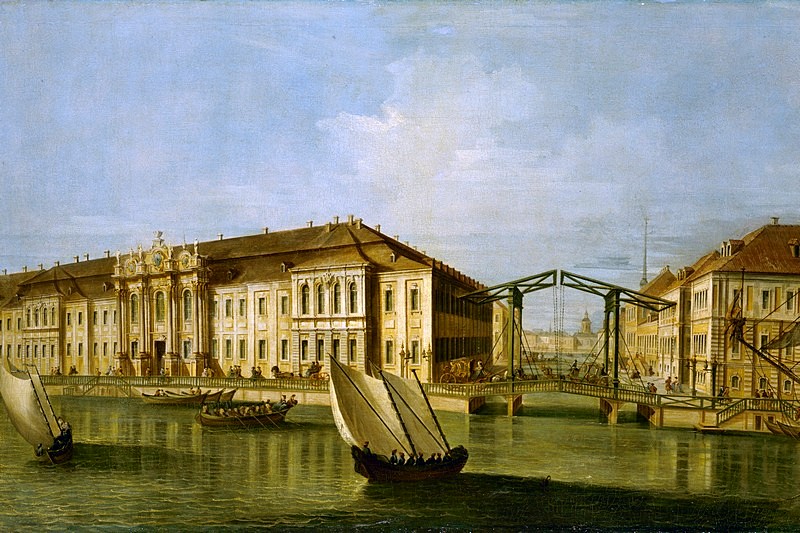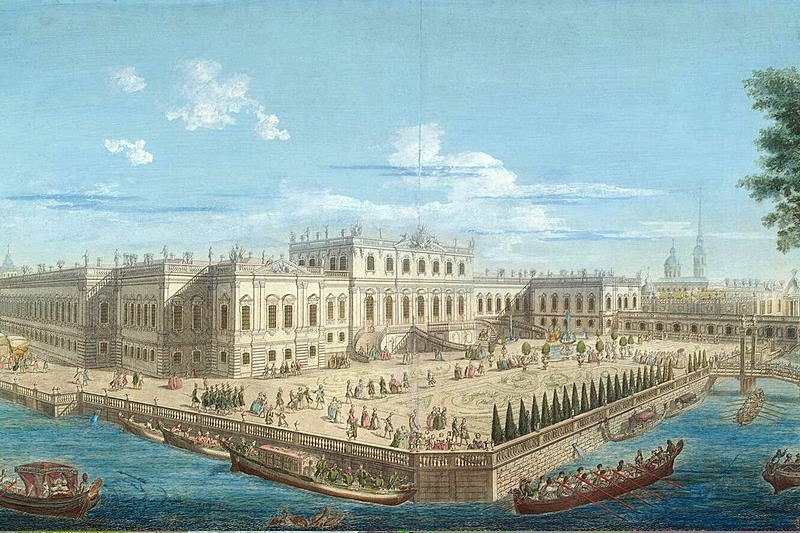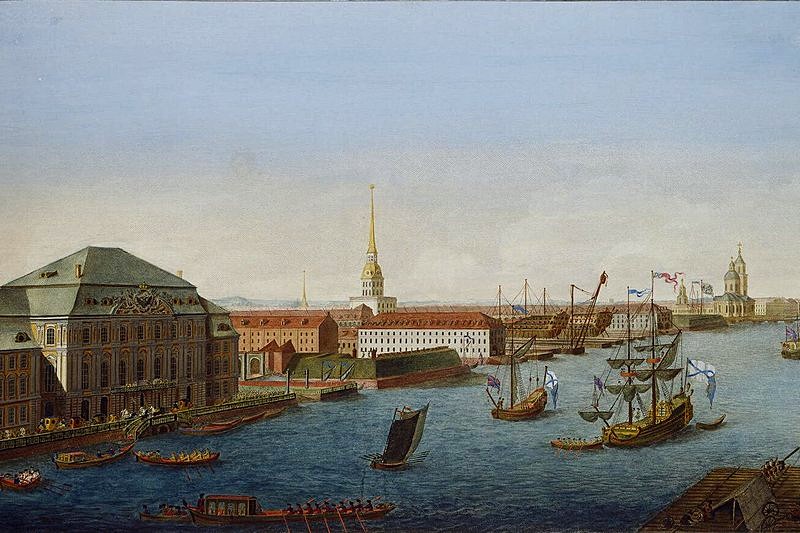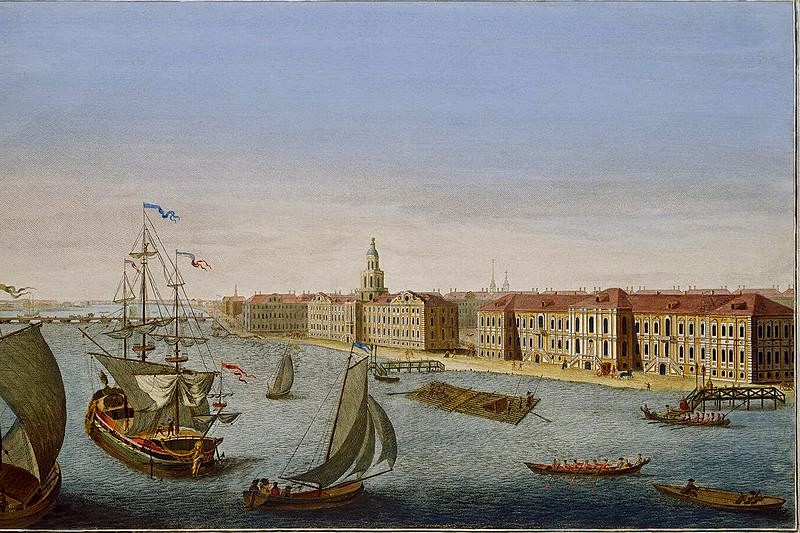St. Petersburg in the era of Empress Elizabeth (1741-1762)
During the era of Empress Elizabeth, Peter the Great's dream was fulfilled: Petersburg became a grand European capital. By the time of her death, the population of Petersburg had reached almost 100,000 inhabitants - double the number at the end of Peter the Great's reign. And the city gradually acquired a truly European appearance as the last wooden buildings disappeared from the city's main avenue, Nevsky Prospekt.
Public safety and civic order became matters of personal concern to Elizabeth. In order to deter fires, the Empress ordered merchants to equip and retain fire guardsmen. Carriages were forbidden from "speeding", regulations were introduced for coachmen, and severe fines were issued for using foul language in public places. The Empress also paid close attention to the outward appearance of her capital: a special decree forbade hanging laundry out to dry on trees and bushes. The Senate issued a decree regarding the maintenance of city bridges, and the first stone bridges were built across the Fontanka River.

The city centre had already been laid out under Peter the Great (the "Nevsky Trident" of the three main streets) and enhanced by the efforts of the architect Peter Yeropkin and the St. Petersburg Construction Committee during the reign of Empress Anna. Now under Elizabeth grandiose buildings were constructed in elaborate Baroque style. Elizabeth found the Smolny Monastery and Cathedral near the small palace where she had spent so many years waiting for the opportunity to ascend to the Russian throne. On the territory of the so-called Maritime Settlement, in what is now the Admiralteyskiy District of the city, the St. Nicholas Naval Cathedral was built, which became the Russian fleet's main church. At Elizabeth's order, her most important architect, the Baroque genius Francesco Bartolomeo Rastrelli, designed buildings that remain Petersburg icons unto this day, such as the imposing Winter Palace, which was only completed after the death of the Empress. In addition, the most prominent nobles built luxurious palaces in the city: the elegant Sheremetev Palace on Nevsky Prospekt, the Vorontsov Palace on Sadovaya Ulitsa and the Shuvalov Palace on Italyanskaya Ulitsa. Among other notable architectural projects in the city were the Anichkov Palace, built on the banks of the Fontanka for Elizabeth's favorite, Alexey Razumovsky, and the palace of his brother, the Ukrainian Hetman, Kirill Razumovsky, on the banks of the Moyka River.

The extravagance of Elizabeth's era left its mark on the outskirts of Petersburg as well. Her own estate, Tsarkoye Selo, was transformed by Rastrelli into a majestic imperial residence in exuberant Baroque style. The estate's most impressive building, the Catherine Palace (named after Elizabeth's mother, Catherine I) was enlarged and remodelled, giving it the astounding appearance that can still be admired today. The palace was surrounded by a luxurious "French" garden, with statues, labyrinths, and exquisitely manicured trees and shrubs. The capitals of the columns and the details of the façade were highlighted with gold leaf, so that the palace simply glowed in the sunlight. In Peterhof, the Grand Palace was likewise expanded and the lead-based statues of the magnificent Grand Cascade were replaced with gilded ones. Now the fountains at Peterhof glitter spectacularly in the summer sun. Balls, masquerades, fireworks and festivities were held at Peterhof that amazed contemporaries lucky enough to behold them.



